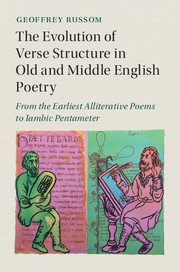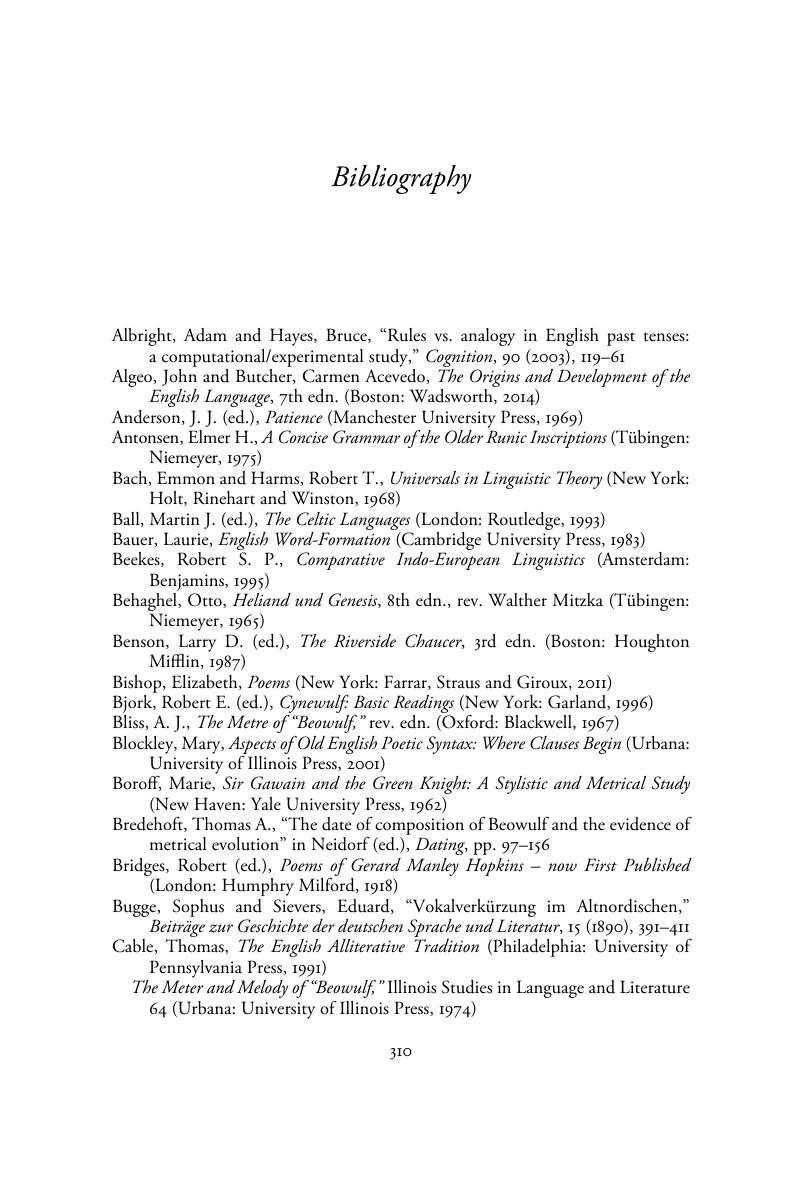 The Evolution of Verse Structure in Old and Middle English Poetry
The Evolution of Verse Structure in Old and Middle English Poetry Book contents
- The Evolution of Verse Structure in Old and Middle English Poetry
- Cambridge Studies in Medieval Literature
- The Evolution of Verse Structure in Old and Middle English Poetry
- Copyright page
- Dedication
- Contents
- Tables
- Acknowledgments
- Chapter 1 General Principles of Poetic Form
- Chapter 2 Indo-European and Germanic Meters
- Chapter 3 Old English Meter in the Era of Beowulf
- Chapter 4 From Late Old English Meter to Middle English Meter
- Chapter 5 Middle English Type A1 and the Hypermetrical B-Verse
- Chapter 6 Type A1 in the A-Verse
- Chapter 7 Types B and C
- Chapter 8 Survival and Extinction in Types A2, Da, and E
- Chapter 9 Type Db and the Hypermetrical A-Verse
- Chapter 10 The Birth of English Iambic Meter
- Chapter 11 General Summary
- Notes
- Glossary of specialized terms as used in this book
- Bibliography
- Index
- Cambridge Studies in Medieval Literature
- References
Bibliography
Published online by Cambridge University Press: 04 May 2017
- The Evolution of Verse Structure in Old and Middle English Poetry
- Cambridge Studies in Medieval Literature
- The Evolution of Verse Structure in Old and Middle English Poetry
- Copyright page
- Dedication
- Contents
- Tables
- Acknowledgments
- Chapter 1 General Principles of Poetic Form
- Chapter 2 Indo-European and Germanic Meters
- Chapter 3 Old English Meter in the Era of Beowulf
- Chapter 4 From Late Old English Meter to Middle English Meter
- Chapter 5 Middle English Type A1 and the Hypermetrical B-Verse
- Chapter 6 Type A1 in the A-Verse
- Chapter 7 Types B and C
- Chapter 8 Survival and Extinction in Types A2, Da, and E
- Chapter 9 Type Db and the Hypermetrical A-Verse
- Chapter 10 The Birth of English Iambic Meter
- Chapter 11 General Summary
- Notes
- Glossary of specialized terms as used in this book
- Bibliography
- Index
- Cambridge Studies in Medieval Literature
- References
Summary

- Type
- Chapter
- Information
- The Evolution of Verse Structure in Old and Middle English PoetryFrom the Earliest Alliterative Poems to Iambic Pentameter, pp. 310 - 316Publisher: Cambridge University PressPrint publication year: 2017


